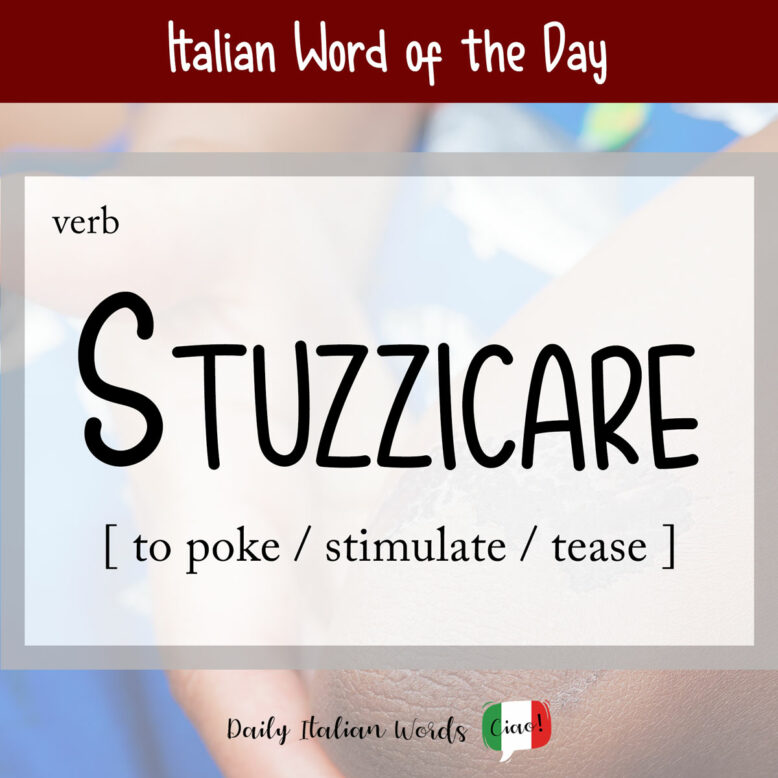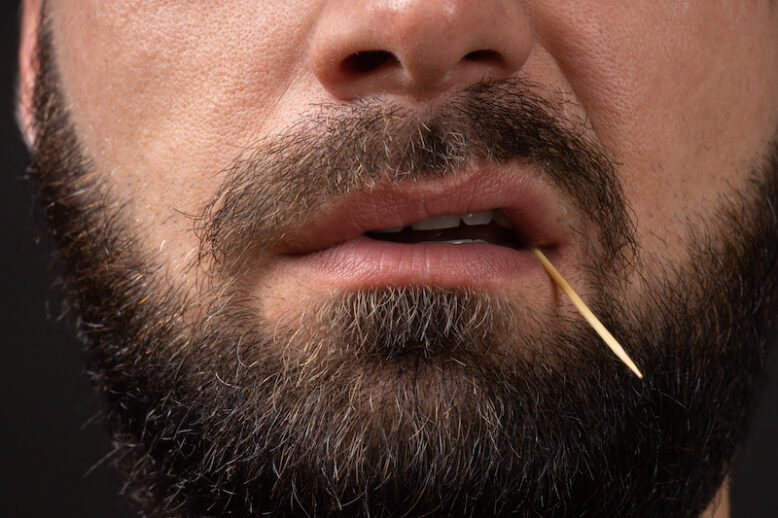What do the acts of prodding, poking, teasing and stimulating all have in common? They are all linked by the verb stuzzicare in Italian, as we’ll discover below!

The origin of stuzzicare appears to be uncertain. Devoto-Oli claims it comes from the verb tuzzare meaning “to strike at the tip,” while Treccani suggests it is probably onomatopoeic in nature.
Whatever its true origin, we know that stuzzicare, in its most literal sense, means “to poke“, “to pick at” or “to prod.”
Il bambino continuava a stuzzicare la sua ferita sul braccio.
The boy continued to pick the wound on his arm.
In Italian, you will frequently encounter the expression stuzzicarsi i denti, which translates as “to pick at one’s teeth“. This is why a toothpick is referred to as a stuzzicadenti in Italian.

However, as we are all aware, literal meanings often give rise to figurative meanings, and the verb stuzzicare happens to have two.
One of the figurative meanings of stuzzicare is “to provoke” or “to tease“, likely because it metaphorically involves poking someone with words or comments.
Non stuzzicare tuo fratello!
Don’t tease your brother!
The second is “to stimulate, excite or arouse” as in the phrases stuzzicare l’appetito (to stimulate one’s appetite) and stuzzicare la curiosità (to arouse one’s curiosity).

When the verb is reciprocal (stuzzicarsi), it means “to tease one other“.
Quei due si stuzzicano di continuo.
Those two are constantly teasing each other.
Heather Broster is a graduate with honours in linguistics from the University of Western Ontario. She is an aspiring polyglot, proficient in English and Italian, as well as Japanese, Welsh, and French to varying degrees of fluency. Originally from Toronto, Heather has resided in various countries, notably Italy for a period of six years. Her primary focus lies in the fields of language acquisition, education, and bilingual instruction.


